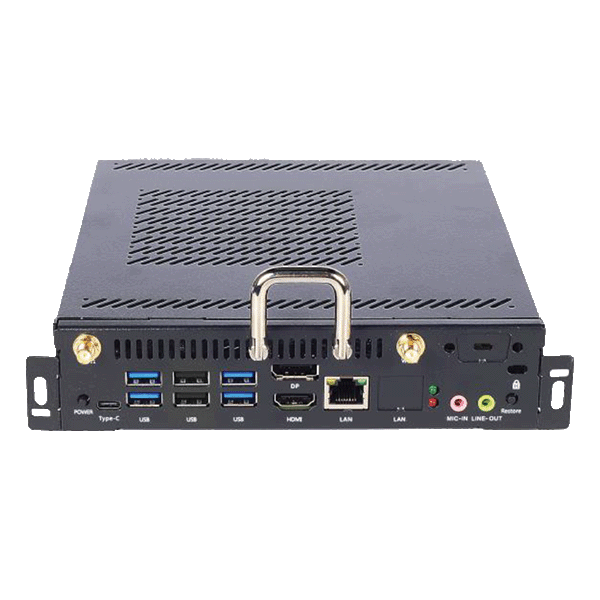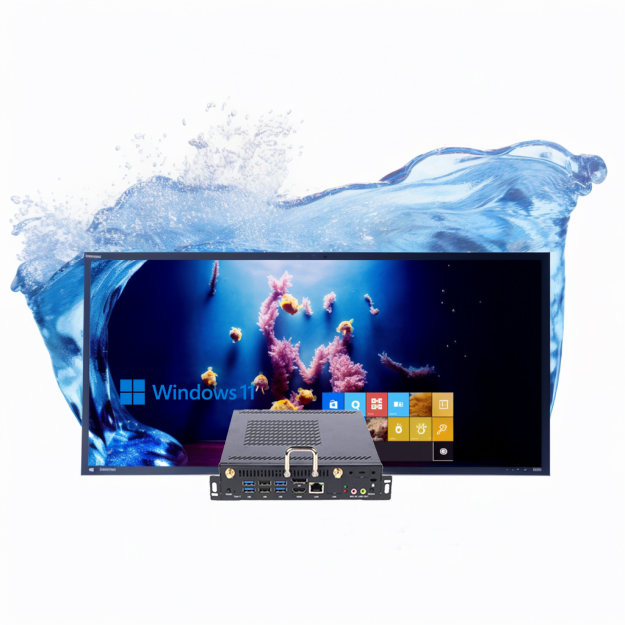Open Pluggable Specification (OPS)
OPS stands for Open Pluggable Specification. It is an industry-standard for connecting computer devices (Windows) to StarBoards’ large flat panel/interactive displays via our universal internal slot.


Using Open Pluggable Specification (OPS) in interactive displays provides several benefits, including:
- Standardisation: OPS standardises slot size, display connection, and power supply specifications. ThStarBoard’s OPC brings benefits in reduced energy consumption and investment costs.
- Easy maintenance: The main benefit of using OPS in interactive displays is to reduce downtime and maintenance costs by making it extremely easy to replace the computing module in case of failure. OPS simplifies device installation, usage, maintenance, and upgrades.
- Compatibility: Computing modules in the OPS format are available central processing unit (CPUs), running operating systems including Microsoft Windows and Google Android. The ease of use makes OPS-compatible devices highly versatile and compatible with various software and hardware.
- Improved functionality: OPS modules can turn interactive displays into giant interactive computers. The extra functionality allows users to log onto Windows and access a wide range of applications and features on the display.
Overall, using an OPS with StarBoard’s interactive displays provides a standardised, versatile, and easy-to-maintain solution that simplifies device installation, usage, maintenance, and upgrades while reducing downtime and maintenance costs.
OPS, or Open Pluggable Specification, simplifies the process of replacing computing modules in several ways:
1. Standardised Slot Size: OPS establishes a standard for slot size, display connection, and power supply specifications. The standardisation allows for effortless swapping of computing modules, removing the need for additional wiring or configuration.
2. Plug-and-Play: OPS modules are hot-swappable. This design enables you to remove and replace modules without powering down the display or interrupting the signal.
3. Reduced Downtime: One of the primary advantages of using OPS in digital signage is its ability to minimise downtime and maintenance costs. It simplifies the replacement of computing modules in the event of a failure, ensuring that displays can be operational again swiftly, thereby minimising any interruption to business activities.
In summary, OPS offers a standardised, adaptable, and easy-to-maintain solution that streamlines device installation, usage, maintenance, and upgrades. It also significantly reduces downtime and maintenance costs.
Yes, you can use OPS computing modules with StarBoard’s latest flat panel displays. The OPS standard facilitates the connection of computer devices to large flat panels or interactive displays through a universal internal slot available on all of StarBoard’s IFPD models.
